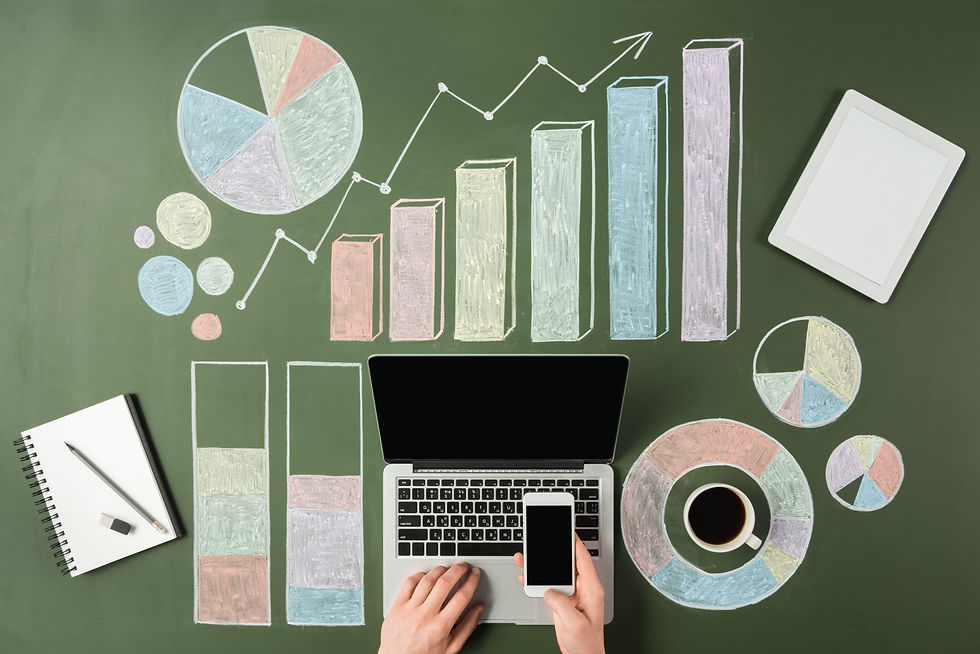Economic Indicators: Can You Read the Future?
- tficherries
- Feb 4, 2019
- 3 min read

Here at Cherries, we’re big fans of building a diverse, stable portfolio and walking away. But if you’re into analyzing your portfolio regularly or following the experts, the most important terms to understand are economic indicators. These are a group of statistics and data points that are published, mostly by the government, that economists use as signs to help predict where the economy is going.
Alone, they don’t mean anything. The idea is to look at more than one of these indicators and try to read the signs about whether the economy is likely to move up or down. But it gets trickier: there are a lot of ways to put indicators together and what they mean is entirely up to interpretation. That’s why two economists reading the exact same data can still have completely different economic forecasts.
So how much can you really understand from economic indicators? The indicators alone may not help you very much. But understanding them can help you to understand arguments made by analysts, politicians, and other “experts”. You may even be able to spot when they’re doing more pontificating than predicting. So here’s a quick introduction to some of the most important indicators you should know:
Consumer Confidence Index
This survey measures how optimistic consumers are feeling about their financial future. The better they feel, the more likely they are to spend rather than cautiously saving, and spending helps the economy grow.
CPI – Consumer Price Index
This indicator tracks the prices in a standard “basket” of goods that average US families need to buy regularly. If it goes up, it means prices are rising and that the purchasing power of most households is probably going down. That’s not a good sign for most of us.
GDP – Gross Domestic Product
This adds up the value of all the goods and services that are produced in the country within a certain time period. Although the annual number is the most important, the US government also releases a quarterly estimate. This is a lagging indicator, meaning it actually tells us about the past. Nonetheless, production is a critical part of assessing the economy’s wellbeing.
Housing Starts
This refers to the number of new residential construction projects that have begun in the course of the past month. It tells us about the past since it reflects people’s feelings about what’s been happening recently, but it also predicts future growth, since a new project will require a lot of raw materials, equipment, and personnel as it goes on.
ISM Manufacturing Index
The Institute for Supply Management surveys 300 manufacturing professionals about inventories, orders, employment and more. The survey hears from the people who are most in-the-know about the state of manufacturing and, because it’s one of the first indicators released each month, gets a lot of attention.
Money Supply
Just as it sounds, this is the amount of money circulating the economy at any given time. It’s an important indicator because it triggers monetary policy like interest rates that can affect spending and saving among consumers and producers alike.
PPI – Producer Price Index
Unlike the CPI, the PPI measures price changes from the perspective of the producer. That means it includes a lot more raw materials and equipment instead of food, clothes, etc. However, just like the CPI, it’s a key measure of inflation.
Retail Sales
This is a group of statistics that try to measure the things consumers bought in a given time period. Good retail sales indicate that people are feeling optimistic and give a boost to a lot of companies that sell directly to consumers.
Stock Indices
Some analysts believe that how stocks are doing can help to predict how the economy overall is going to do in the near future. Certainly, the success of publicly-traded companies around the country is tied to everything from interest rates to employment to consumer confidence and inflation. That means the state of the stock market is closely connected with the state of the economy, but it can be hard to say exactly how.
Unemployment Rate
This measures how many people in the country want to work but can’t find jobs. The higher it is, the worse it is for the economy. It suggests that producers haven’t been doing well and aren’t hiring and that consumers don’t have income and won’t be spending any time soon.




Comments